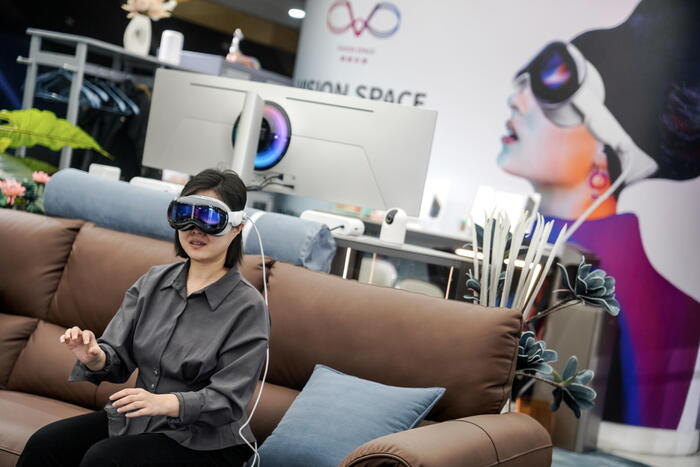The 'Islands' game improves self-control in patients with eating disorders or gambling addiction.
In a laboratory in Berlin, Germany, a group of healthy older adults is immersed in a simulation of a cruise ship called
Schiff Ahoi!
(
Ship in sight!
).
Armed with a tablet, their task is to serve food from the ship's buffet before they disappear and avoid taking those that have been prohibited.
If they play well, the points earned will help them take the ship to Mediterranean destinations, where they can get virtual postcards.
These games may be the key to finding innovative ways to exercise inhibition in people with addictions or impulsive behaviors.
Alcoholism and drug addiction, tobacco use, gambling and eating disorders can be especially difficult to overcome and there is a high probability of relapse even when following evidence-based treatments.
Relapse rates
Relapse rates are really high, especially during the first year of treatment.
According to Leonie Ascone Michelis, clinical psychologist and postdoctoral researcher at the university hospital Hamburg-Eppendorf (Germany): "It is a global burden with implications for costs, the economy and especially the lives of the people affected."
Although therapy cannot be substituted, the challenge that overcoming an addiction continues to pose points to the importance of finding complementary and accessible methods to achieve it.
To do this, EU researchers have set out to create more immersive experiences in digital formats, in order to encourage self-control as part of the addiction recovery process.
In the Self-Control project in which Ascone participates, he assumes that the methods to overcome an addiction do not have to be boring, but can be conceived in a more positive and entertaining way.
The objective of this project is to create interactive methods in formats such as video games or mobile applications, since they favor a more satisfactory interaction on the part of users and thus contribute to improving their capacity for self-control.
In this project, virtual reality is also used to replicate real situations in which people face temptations.
In this sense, Ascone explains: “We try to make these interventions with video games or virtual reality part of our clinical program.
Video games are liked by a lot of people, so we hope to get good results using them with this new feature.
impulse control
The question of whether it is possible to train self-control has been widely debated.
Previous attempts in this direction have had a high failure rate, although one of them planted the seed for this project by providing evidence of successful inhibition training through video games.
In the study, led by Simone Kühn, currently Principal Investigator of the
Self-Control
project and a neuroscientist at the Hamburg-Eppendorf University Hospital and the Berlin-based Max Planck Institute for Human Development, a group of older adults was trained through the game
Ship in sight!
, to which they had to dedicate 15 minutes a day for two months.
Participants who completed the training performed better than control groups on a task commonly used to measure inhibition.
The test consisted of pressing different buttons depending on the direction of an arrow and containing the reaction when the arrow turned red.
The results of this test, which is known as the
stop-signal task
, suggest that it is possible to transfer the capacity for self-control to other situations.
Post-training MRI scans of the brain showed for the first time an increase in the thickness of the prefrontal area of the brain known as the right inferior frontal gyrus, which previous research has shown is related to the inhibitory response.
According to Ascone, "these findings reveal that it is possible to modify inhibitory behavior."
What extent?.
Virtual reality headsets
The initial study pointed to the relevance of investigating this question by delving into video game-based approaches, precisely what the
Self-Control
team is dealing with .
Some games are based on adaptations of self-monitoring methods that have shown promise in previous studies.
For example, one of them is based on a method known as approach-avoidance training (AAT), which derives from the finding that alcohol-dependent people are more likely to approach representations of alcohol than to avoid them.
This virtual training, which consists of images of alcoholic and non-alcoholic beverages that users must draw toward or away from with a remote, has been linked in some studies to reduced relapse rates.
In the
Self-Control
project , this concept has been extended to give rise to a game with a virtual reality helmet where the participants train in a much more real three-dimensional environment, a virtual bar counter, where there are virtual drinks and where they have to move their arms just as they do in real life.
The training is being tested alongside standard treatments in various inpatient rehabilitation clinics for alcoholics in Denmark, Germany and Poland.
Ascone clarifies: “By the end of the study, we will have obtained data from different countries and we will be able to verify if it works as we hope.
Also, as patients like it, we hope to be able to do a three-month planned follow-up of most people, since the three months after discharge from hospital are the most important.”
The team is also working on developing a portable version of this virtual reality that people will be able to access from home and which Ascone compares to the virtual reality lightsaber game
Beat Saber
.
“Rather than approach-avoidance training (AAT), I consider it a type of alcohol-related aggressiveness training (AAAT).”
Several other games and apps are also being tested by participants to determine what works and what doesn't.
One of them is set in a supermarket and requires players to pick healthy snacks off the shelves and avoid unhealthy ones, again using the concept of stop signs.
Another app, based on approach-avoidance training (AAT) and running on a tablet, is aimed at combating smoking.
"We are trying different approaches, combining elements of video games with clinical knowledge and creating applications that are both entertaining and effective," explains Ascone.
The high rates of relapse suggest that it is just as important to investigate the neuroscience underlying addiction as it is to investigate the factors that promote recovery.
Regarding this aspect, Janna Cousijn, a neuroscientist at the Erasmus University of Rotterdam in the Netherlands, clarifies: "We must be very critical and above all reflect on whether we are on the right track."
According to the researcher, one way to make new contributions is to begin to unite the different lines of research: “We continually develop new methods that allow us to delve into specific mechanisms.
In my opinion, the next challenge would be to bring those methods together and integrate the evidence at multiple levels.”
A good starting point in this regard, she says, would be to fill in certain key research gaps, some of which form the basis of a project she leads called
Aging Matters
.
One of these gaps is that addiction studies tend to look at adolescents and adults separately, with very few comparison studies, resulting in little being known about how age influences the mechanisms underlying addiction. addiction.
age of addiction
In addition, according to Cousijn, studies of adolescents tend to focus on their risk of developing an addiction rather than their ability to recover, which is often greater than that of adults.
"If we find out why some people can and do recover on their own, a detailed study of that process would allow us to learn more about the natural potential of the brain to recover," she says.
Cousijn plans to work with 300 people aged 16 to 35 who use alcohol, cannabis, or both, and conduct a three-year longitudinal study of their neural imaging, which he hopes to start around September: "I want to cover everything the range of addictions, from the mildest to the most severe.
The researcher plans to evaluate the cognition and brain function of the participants at the beginning and at the end of the period, by means of magnetic resonance imaging, and to correlate the result with the description that the people make of the changes that have occurred in their consumption of cannabis or alcohol. .
In addition, she also intends to carry out interventions with computer tasks and video games to examine other cognitive functions related to control.
"I hope to be able to isolate essential elements of the similarities and differences between adolescents and adults with addictions, and that the resulting information can be used to improve prevention and treatment strategies aimed at specific age groups," he explains.
To cover other gaps through another comparative study, this time between people and animals, Cousijn will examine these same addictions in rats in the stages of adolescence and maturity, for which his team has developed a protocol for studying people and animals in the the same exploratory parameters are used.
The advantage of this approach is that researchers can perform deeper analyzes of brain function in rats with greater control of their environment, which helps to eliminate the influence of external factors.
"This means that if we find associations between the two, we will have more guarantees that there is a causality," he clarifies.
Image Score
To address another research gap, Cousijn will study the complex role that the social environment plays in addictions through a questionnaire and different tasks, such as one that consists of scoring images of beers and observing the changes that occur in the answers when people have heard comments from their peer group.
According to her, this part is key to addressing the problem of addiction, since it is necessary to compare how the brain reacts to substances in social and non-social situations.
Ultimately, treating addictions requires novel methods, whether they come from technologies or from experimental methods: “I am very committed to the development of new experimentation paradigms that allow us to study the processes underlying addiction.
Therefore, I hope that this information can be used by other people to develop treatments and prevention strategies.”
The research described in this article was financed with EU funds.
Article originally published
in
Horizon
, the European Union's Research and Innovation Magazine.
You can follow EL PAÍS TECNOLOGÍA on
and
or sign up here to receive our
weekly newsletter
.

/cloudfront-eu-central-1.images.arcpublishing.com/prisa/HBB5TJSOWMUFYL6LHGW3A7Y65M.jpg)







